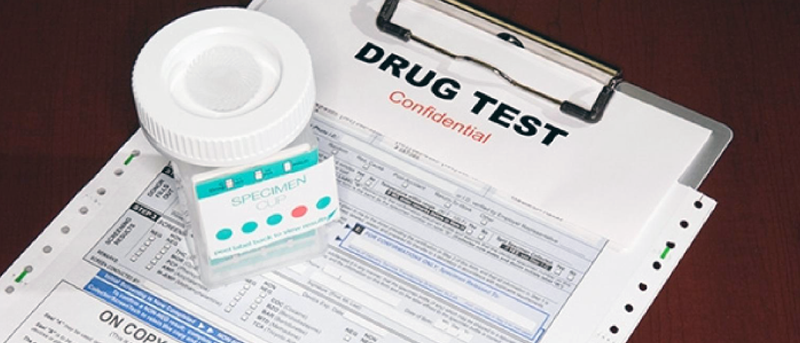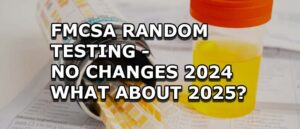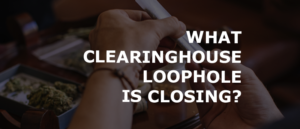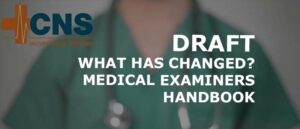What British Columbia speed limiter mandate means for you
Do you travel in or through British Columbia, Canada? There is now a speed limiter requirement affecting most heavy trucks, as of Friday April 5,
We are a team of DOT Compliance and Licensing Professionals helping trucking and transportation companies remain safe, compliant, and profitable.
CNS or Compliance Navigation Specialists is DOT Compliance company that assists trucking and transportation companies remain DOT Compliant. We are part of a network of companies, CNS Companies, specializing in services related to the transportation, manufacturing, construction, service, education and medical industries.

A full-scale DOT Compliance Program managing a long haul carrier’s safety, compliance, licensing and more.
Learn more >>>
A DOT Compliance Program that keeps motor carriers compliant with the 6 Basic DOT Regulations required of all carriers.
Learn more >>>
Our Short-Haul/Construction Program is a full-scale program designed for private carriers that do not haul for-hire.
Learn more >>>
Our most comprehensive DOT Compliance Program, operating as your company’s off-site Safety Director or assisting your current safety personnel.
Learn more >>>
Our Non-CDL Program is a full-scale program managing safety, compliance, licensing and more for moving companies, couriers, landscapers, or any company subject to DOT regulations and does not employ CDL drivers.
Learn more >>>
Our DOT Audit Services cover a number of different types of DOT Audits that new and existing carriers will be subject to.
Our DOT Driver Services help trucking companies and carriers to stay compliant as they grow and hire more drivers.
Our DOT Vehicle Services focus on ensuring your vehicles are compliant with DOT Regulations, which is just as important as your drivers.
Our DOT Services for Special Carriers focus on companies outside of the typical motor carrier, like HAZMAT, Passenger and Bus Carriers.
CNS is part of a group of companies that offer other necessary services for the trucking and transportation industry, such as Commercial Trucking Insurance, CDL Training, Online Training Course, and even Healthcare.
Our DOT Licensing Services will cover you whether you are an existing company or just starting a trucking company. Our DOT Licensing Specialists can help you get up and running and in days with your DOT number, MC Authority, EIN, UCR, IFTA, 2290 HVUT, Fuel Taxes and can even set you up to get your Commercial Driver's License (CDL) with CNS Driver Training Center.
Our DOT Licensing Specialists will help you with every aspect of starting a trucking company. All you need to do is choose a name for your trucking company.
You will need to ensure your DOT Number, MC Authority, Vehicle Registration, etc. is all set up properly when you start your trucking business.
Our Licensing Specialists can help with all aspects of filing and renewing licenses, fuel taxes, etc.
CNS is part of a group of companies that offer other necessary services for the trucking and transportation industry, such as Commercial Trucking Insurance, CDL Training, Online Training Course, and even Healthcare.
Do you travel in or through British Columbia, Canada? There is now a speed limiter requirement affecting most heavy trucks, as of Friday April 5,
CNS or Compliance Navigation Specialists is DOT Compliance company that assists trucking and transportation companies remain DOT Compliant. We are part of a network of companies, CNS Companies, specializing in services related to the transportation, manufacturing, construction, service, education and medical industries.
CNS Companies is a network of companies specializing in services related to the transportation, manufacturing, construction, service, education and medical industries. Our DOT Compliance division is handled by Compliance Navigation Specialists, CNS Insurance handles Commercial Truck Insurance, CDL training is managed by the CNS Driver Training Center and healthcare is managed by CNS Occupational Medicine.
We are a team of DOT Compliance and Licensing Professionals helping trucking and transportation companies remain safe, compliant, and profitable.
CNS or Compliance Navigation Specialists is DOT Compliance company that assists trucking and transportation companies remain DOT Compliant. We are part of a network of companies, CNS Companies, specializing in services related to the transportation, manufacturing, construction, service, education and medical industries.

A full-scale DOT Compliance Program managing a long haul carrier’s safety, compliance, licensing and more.
Learn more >>>
A DOT Compliance Program that keeps motor carriers compliant with the 6 Basic DOT Regulations required of all carriers.
Learn more >>>
Our Short-Haul/Construction Program is a full-scale program designed for private carriers that do not haul for-hire.
Learn more >>>
Our most comprehensive DOT Compliance Program, operating as your company’s off-site Safety Director or assisting your current safety personnel.
Learn more >>>
Our Non-CDL Program is a full-scale program managing safety, compliance, licensing and more for moving companies, couriers, landscapers, or any company subject to DOT regulations and does not employ CDL drivers.
Learn more >>>
Our DOT Audit Services cover a number of different types of DOT Audits that new and existing carriers will be subject to.
Our DOT Driver Services help trucking companies and carriers to stay compliant as they grow and hire more drivers.
Our DOT Vehicle Services focus on ensuring your vehicles are compliant with DOT Regulations, which is just as important as your drivers.
Our DOT Services for Special Carriers focus on companies outside of the typical motor carrier, like HAZMAT, Passenger and Bus Carriers.
CNS is part of a group of companies that offer other necessary services for the trucking and transportation industry, such as Commercial Trucking Insurance, CDL Training, Online Training Course, and even Healthcare.
Our DOT Licensing Services will cover you whether you are an existing company or just starting a trucking company. Our DOT Licensing Specialists can help you get up and running and in days with your DOT number, MC Authority, EIN, UCR, IFTA, 2290 HVUT, Fuel Taxes and can even set you up to get your Commercial Driver's License (CDL) with CNS Driver Training Center.
Our DOT Licensing Specialists will help you with every aspect of starting a trucking company. All you need to do is choose a name for your trucking company.
You will need to ensure your DOT Number, MC Authority, Vehicle Registration, etc. is all set up properly when you start your trucking business.
Our Licensing Specialists can help with all aspects of filing and renewing licenses, fuel taxes, etc.
CNS is part of a group of companies that offer other necessary services for the trucking and transportation industry, such as Commercial Trucking Insurance, CDL Training, Online Training Course, and even Healthcare.
Do you travel in or through British Columbia, Canada? There is now a speed limiter requirement affecting most heavy trucks, as of Friday April 5,
CNS or Compliance Navigation Specialists is DOT Compliance company that assists trucking and transportation companies remain DOT Compliant. We are part of a network of companies, CNS Companies, specializing in services related to the transportation, manufacturing, construction, service, education and medical industries.
CNS Companies is a network of companies specializing in services related to the transportation, manufacturing, construction, service, education and medical industries. Our DOT Compliance division is handled by Compliance Navigation Specialists, CNS Insurance handles Commercial Truck Insurance, CDL training is managed by the CNS Driver Training Center and healthcare is managed by CNS Occupational Medicine.

Of the three different types of drug testing – urine, oral saliva, and hair testing – which one is most effective to determine drug use?
Urine has been the “gold standard” as the most common method for drug testing across the industry, even as oral (saliva) and hair testing techniques have improved reliability over last few decades.
As we wait for Health and Human Services (HHS) to release hair testing guidelines and the Department of Transportation to adopt those guidelines for safety sensitive positions across Aviation, Commercial Motor Carriers (FMCSA), Maritime, Pipeline, Railroad, and Transit, the discussion of what type of drug testing methods are most effective is now heating up.
Unfortunately, there are many who are misguided on the strategy of when to use each drug testing method as there are pros and cons to each method and the reasons for testing.
So, let us break this down for you.
The problem with this question is companies are considering dropping urine for oral or hair testing for every type of reason an employee would be tested. This is misguided.
It is important to note that there are various restrictive state drug testing regulations that may prevent companies from drug testing, who they can or cannot drug test and why.
Regardless, companies need to remember the various reasons they are testing employees. These are:
Each reason for testing has their own goals for keeping employees and assets safe.
For example, the goal of pre-employment testing is making sure your staff, especially in safety-sensitive positions, do not have a history of drug abuse. In this situation, it would be ideal to use a drug testing method that provides a longer drug use history. Conversely, for reasonable suspicion testing, a shorter drug detection window would be more effective as it can accurately find recent drug use.
Understanding which method for testing has a shorter detection window would help companies decide if that method is best for this reason.
To help make choices on which method of testing is best for your company and reason for testing, we need to break down and compare urine, hair, and oral saliva testing into:
| Urine Testing | Oral (Saliva) Testing | Hair Testing | |
| Regulated | HHS + DOT | Pending HHS + DOT | Pending HHS + DOT |
| Detection Window | 2 – 7 days | 8 – 48 hours, short detection window | 7 – 90 days, long detection window |
| Collection Time | 10+ min depending on if donor did not provide enough sample | 15 minutes, non-invasive | 5 minutes, less invasive |
| Turnaround Time | 24-48 hours | 24-72 hours | 24-72 hours |
| Ideal Reason for Testing | Suitable for all testing reasons | Reasonable Suspicion & post-accident testing program | Post-accident, reasonable suspicion, pre-employment, and random testing program |
Now that we understand the pros and cons to each method of drug testing, let us dive into which method is most effective for the reasons a company would drug test.
Urine testing: As the most common testing method, urine testing can detect recent use, between one to three days and is suitable for all testing reasons and types of drugs being tested.
Oral saliva testing: Mouth swab testing is the least invasive method of testing and can detect recent drug use within the first few hours to 48 hours. This makes oral testing the best testing method for both reasonable suspicion and post-accident testing.
Hair testing: Using hair samples from the body is the only method of drug testing that can detect drugs and alcohol in the system from a week to 90+ days, unlike urine testing, which only detects drugs and alcohol up to 7 days. In recent statistics from Quest, hair testing provides nearly twice the number of positives drug tests than urine testing due to its longer detection time-frame and is the best option for a pre-employment or random testing program.
When looking at updating your company drug testing policies, we believe a mix in methods is the most beneficial in your drug testing programs. Again, it is important to note that there are various restrictive state drug testing regulations that may prevent companies from drug testing, who they can or cannot test and why.
At CNS, we offer a comprehensive Drug and Alcohol Consortium Service and are a certified consortium and third-party administrator (C/TPA).
Our experts ensure that all DOT rules and regulations are followed, including the implementation of random drug tests for you and your drivers, updating your company drug testing policies, record retention and document purge management.
We take all the necessary steps and precautions to keep you and your drivers compliant with the DOT drug and alcohol testing requirements.
For more information, contact us at 888.260.9448 or info@cnsprotects.com.

According to the DOT’s 2024 DOT Random Testing Rates Notice, annual random testing rates for all DOT Agencies will remain the same as 2023. Each

On January 6, 2020, the FMCSA launched the CDL Clearinghouse, an online database where CDL driver drug and alcohol testing violations and return-to-duty information will

On Friday, September 9, 2022, the FMCSA sent out an email “A Notice for Federal Drug Testing Collection Sites & CDL Employers Regarding FMCSA Regulated

FMCSA extends the comment period for its notice of proposed regulatory guidance relating to the draft Medical Examiner’s Handbook (MEH) to October 31, 2022. The
Our DOT Compliance Programs ensure it is your top priority and keeps your business running.
Receive the latest transportation and trucking industry information about FMCSA and DOT Audits, Regulations, etc.

According to the DOT’s 2024 DOT Random Testing Rates Notice, annual random testing rates for all DOT Agencies will remain the same as 2023. Each

On January 6, 2020, the FMCSA launched the CDL Clearinghouse, an online database where CDL driver drug and alcohol testing violations and return-to-duty information will

On Friday, September 9, 2022, the FMCSA sent out an email “A Notice for Federal Drug Testing Collection Sites & CDL Employers Regarding FMCSA Regulated
Join our monthly newsletter and stay up-to-date on trucking industry news and receive important compliance and licensing tips.
Join our monthly newsletter and stay up-to-date on trucking industry news and receive important compliance and licensing tips.